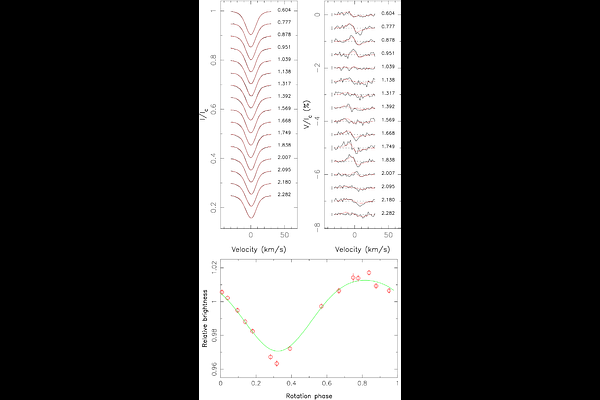Mass, Gas, and Gauss around a T Tauri Star with SPIRou

Mass, Gas, and Gauss around a T Tauri Star with SPIRou
J. -F. Donati, E. Gaidos, C. Moutou, P. I. Cristofari, L. Arnold, M. G. Barber, A. W. Mann
AbstractStudies of young planets help us understand planet evolution and investigate important evolutionary processes such as atmospheric escape. We monitored IRAS 04125+2902, a 3 Myr-old T Tauri star with a transiting planet and a transitional disk, with the SPIRou infrared spectropolarimeter on the Canada-France-Hawaii Telescope. Using these data, we constrained the mass and density of the Jupiter-size companion to <0.16 M_J and <0.23 g/cm^3, respectively (90\% upper limits). These rule out a Jovian-like object and support the hypothesis that it is an ancestor to the numerous sub-Neptunes found around mature stars. We unambiguously detect magnetic fields at the stellar surface, small-scale fields reaching 1.5 kG and the large-scale field mostly consisting of a 0.80-0.95 kG dipole inclined by 5-15deg to the rotation axis. Accretion onto the star is low and/or episodic at a maximum rate of ~10^{-11} Msun/yr, indicating that IRAS 04125+2902 is most likely in a magnetic 'propeller' regime, possibly maintaining the star's slow rotation (11.3~d). We discover persistent Doppler-shifted absorption in a metastable He I line, clear evidence for a magnetized wind from a gaseous inner disk. Variability in absorption suggests structure in the disk wind that could reflect disk-planet interactions.